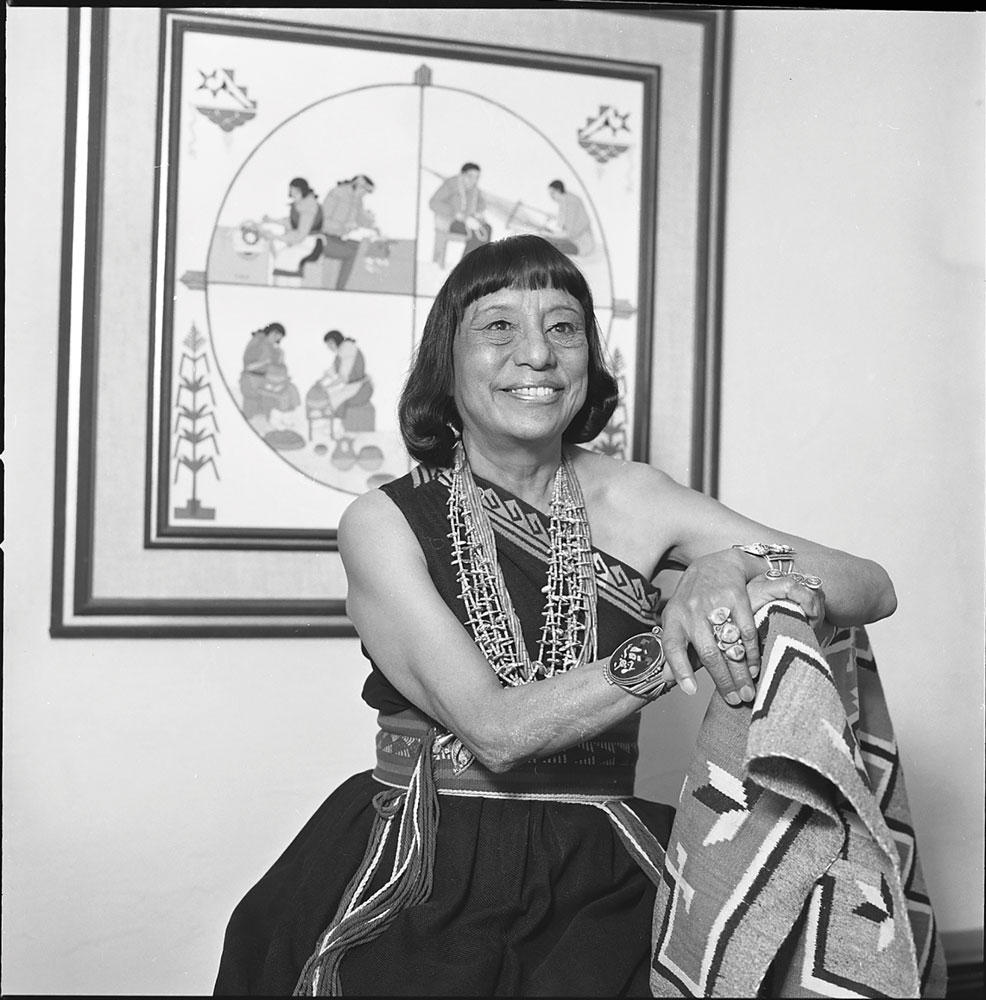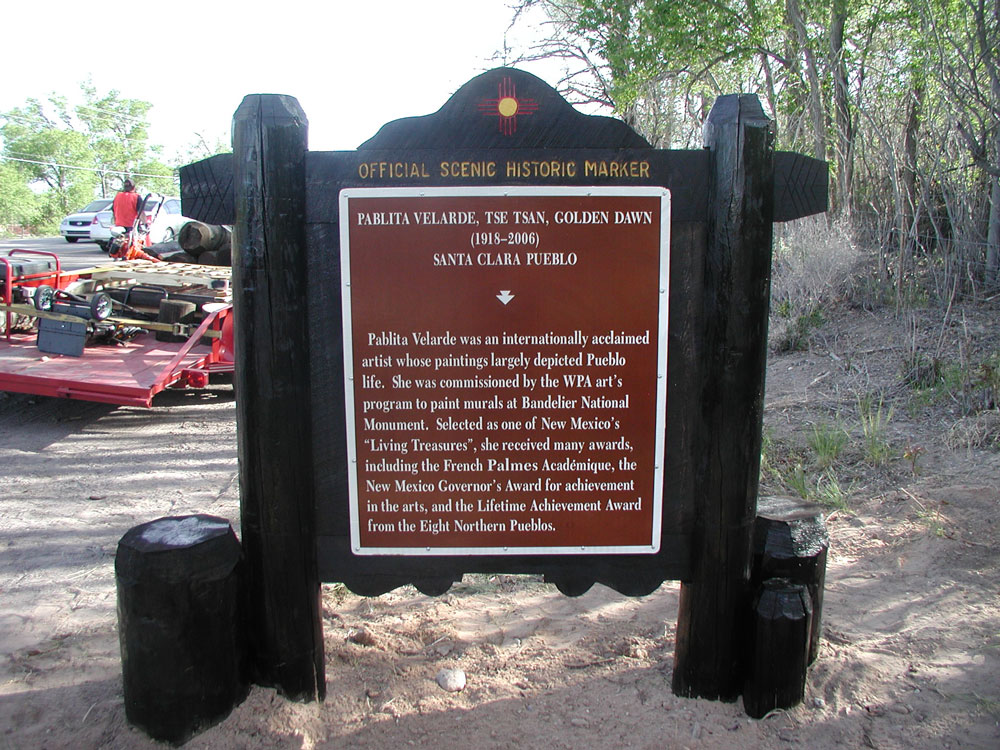Pablita Velarde
Pablita Velarde, Tse Tsan, “Golden Dawn”
1918 - 2006
Rio Arriba County
Challenging conventional roles for women, she became one of the most prominent Native American painters in the Southwest. From 1939 to 1945, she completed more than eighty paintings for the Bandelier project, offering a glimpse into Pueblo life in the early twentieth century.
Pablita Velarde, Tse Tsan, “Golden Dawn,” was one of the most prominent Native American painters in the Southwest. Her paintings document Pueblo life and culture, and have appeared in numerous exhibitions and museums throughout the United States.
Given the Tewa name Tse Tsan or Golden Dawn by her grandmother, Pablita was born in 1918, in the village of Santa Clara, a Pueblo community about twenty-five miles north of Santa Fe. Pablita’s mother, Marianita, died from tuberculosis when Pablita was a child, leaving four girls to be raised by their father, Herman. Recognizing the value of education, Herman sent three of his four young daughters to St. Catherine’s Indian School in Santa Fe. Pablita was six at the time. The girls spent summers with their father, his new wife, and their grandmother. After completing sixth grade at St. Catherine’s, Pablita transferred to Santa Fe Indian School.
At the Indian School, Pablita encountered two women who would play influential roles in her life. The first was Dorothy Dunn, an Anglo art teacher, who encouraged Pablita’s budding artistic talents. In 1932, Dunn established the “Studio” at the Indian school, a drawing and painting program that urged students to paint scenes from Pueblo life. Pablita was one of the first girls in Dunn’s class. Pablita’s early watercolors featured traditional women’s tasks at Santa Clara, unusual depictions in Dunn’s male dominated class.
While attending the Indian School, Pablita also befriended Tonita Peña, the first Pueblo woman easel painter. Originally from San Ildefonso, but living in Cochiti, Peña had been staying at the Indian School dormitories as part of the 1934 Public Works of Art Project, a New Deal program that employed Indian painters and craftspeople. Pablita spent evenings visiting with and watching Peña paint; both women spoke Tewa. Two of the first Pueblo women painters, they faced similar obstacles as they challenged conventional women’s roles.
After graduating from Santa Fe Indian School in 1936, Pablita worked as an assistant teacher at the Santa Clara Day School. In 1939, she joined other “Studio” artists in painting murals at Maisel’s store in downtown Albuquerque, and later worked at Bandelier National Monument under the Works Progress Administration arts program to paint scenes depicting Pueblo life and culture. Velarde also used pigments made from ground minerals and rocks in her well-known earth paintings.
From 1939 to 1945, she completed approximately eighty-four paintings for the Bandelier project, offering a glimpse into Pueblo life in the early twentieth century. With her earnings she coordinated the construction of and furnished a new house at Santa Clara without the assistance of her father, a task unusual for Pueblo women at the time. In 1942, Pablita married Herbert Hardin, an Anglo man she had met while working as an operator for the Bureau of Indian Affairs Office in Albuquerque. The couple had a son and a daughter, Helen, who went on to become a notable artist.
In 1949, Pablita won her first major award from the Philbrook Art Center in Tulsa, Oklahoma. She received further acclaim when she was awarded the French Palmes Académique (1955) and the New Mexico Governor’s Award for Achievement in the Arts (1977). In 1960, in collaboration with her father, she completed Old Father Storyteller, a collection of Pueblo stories accompanied by her illustrations. She continued to paint well into her nineties at her home in Albuquerque until her death in 2006.
Sources:
Heyer, Sally. One House, One Voice, One Heart: Native American Education at Santa Fe Indian School. Santa Fe: Museum of New Mexico Press, 1990.
Szasz, Margaret, Connell, Ed. “Pablita Velarde: The Pueblo Artist as a Cultural Broker.” In Between Indian and White Worlds: The Cultural Broker. Norman: University of Oklahoma Press, 2004, pp. 273-293.
Reed, Maureen E. A Woman’s Place: Women Writing New Mexico. Albuquerque: University of New Mexico Press, 2005.
Ruch, Marcella J. “Pablita Velarde: Painting Her People.” New Mexico Magazine, 2001.
Sando, Joe S. Pueblo. Profiles: Cultural Identity through Centuries of Change. Santa Fe: Clear Light Publishers, 1998.
Directions:
Pablita Velarde, Tse Tsan, “Golden Dawn”
Rio Arriba County
Artist | Cultural preservationist | Educator |
Statehood (1912 - present) |
North Central








